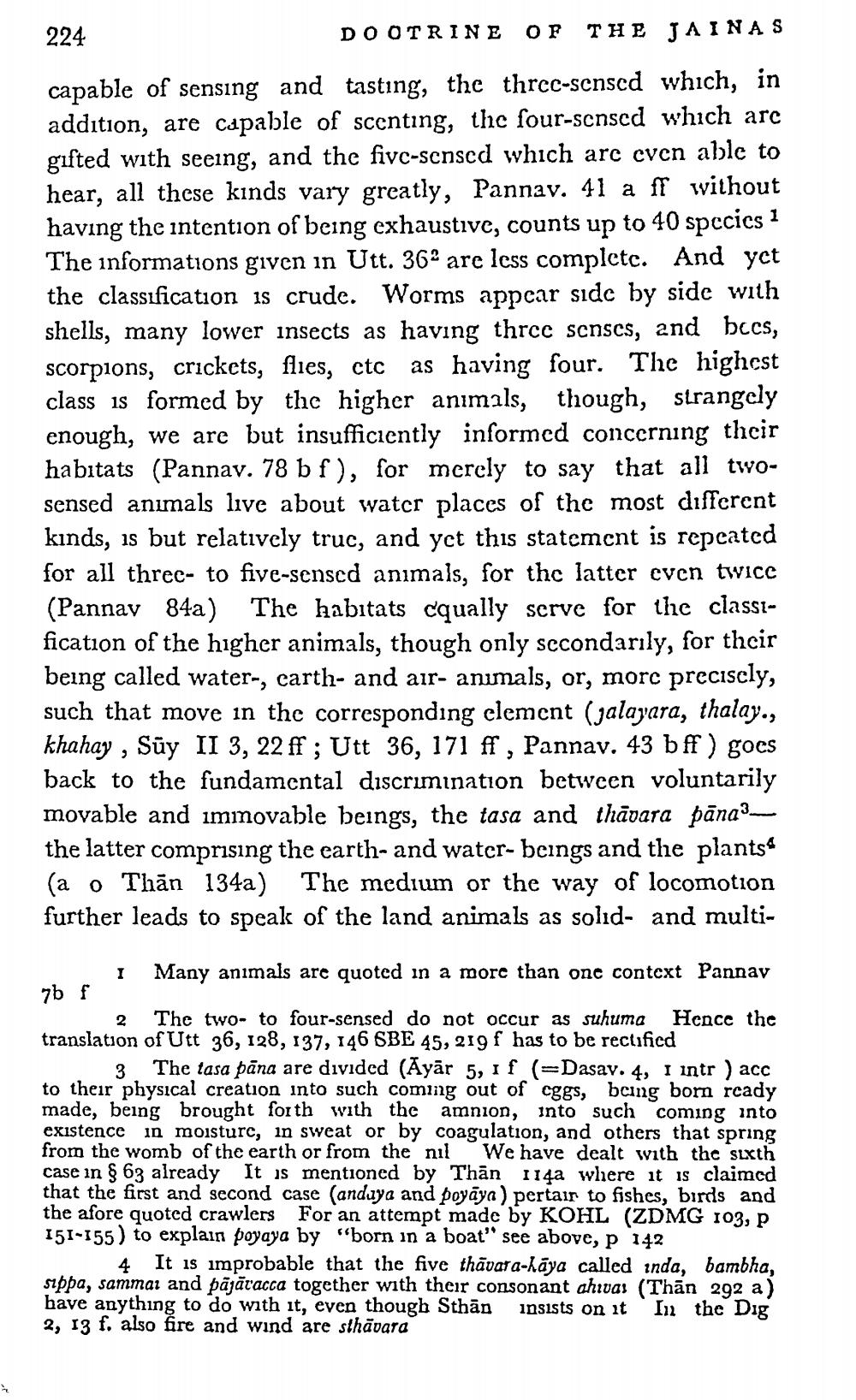________________
224
DO OTRINE OF THE JAINAS capable of sensing and tasting, the three-sensed which, in addition, are capable of scenting, the four-sensed which are gifted with seeing, and the five-sensed which are even able to hear, all these kinds vary greatly, Pannav. 41 a ff without having the intention of being exhaustive, counts up to 40 species 1 The informations given in Utt. 362 are less complete. And yet the classification is crude. Worms appear side by side with shells, many lower insects as having three senses, and bccs, scorpions, crickets, flies, etc as having four. The highest class is formed by the higher animals, though, strangely enough, we are but insufficiently informed concerning their habitats (Pannav. 78 b f), for merely to say that all twosensed animals live about water places of the most different kinds, is but relatively truc, and yet this statement is repeated for all three to five-sensed animals, for the latter even twice (Pannav 84a) The habitats cqually serve for the classification of the higher animals, though only secondarily, for their being called water-, carth- and air- animals, or, more precisely, such that move in the corresponding element (jalayara, thalay., khahay, Suy II 3, 22 ff; Utt 36, 171 ff, Pannav. 43 bff) goes back to the fundamental discrimination between voluntarily movable and immovable beings, the tasa and thāvara pāna3— the latter comprising the earth- and water- beings and the plants (a o Than 134a) The medium or the way of locomotion further leads to speak of the land animals as solid- and multi
7b f
I Many animals are quoted in a more than one context Pannav 2 The two- to four-sensed do not occur as suhuma Hence the translation of Utt 36, 128, 137, 146 SBE 45, 219 f has to be rectified
3 The tasa pana are divided (Ayar 5, 1 f (=Dasav. 4, I intr ) acc to their physical creation into such coming out of eggs, being born ready made, being brought forth with the amnion, into such coming into existence in moisture, in sweat or by coagulation, and others that spring from the womb of the earth or from the nil We have dealt with the sixth case in § 63 already It is mentioned by Than 114a where it is claimed that the first and second case (andaya and poyaya) pertain to fishes, birds and the afore quoted crawlers For an attempt made by KOHL (ZDMG 103, p 151-155) to explain poyaya by "born in a boat" see above, p 142
4 It is improbable that the five thavara-kaya called inda, bambha, sippa, sammar and pajaracca together with their consonant ahivas (Than 292 a) have anything to do with it, even though Sthan insists on it In the Dig 2, 13 f. also fire and wind are sthavara




